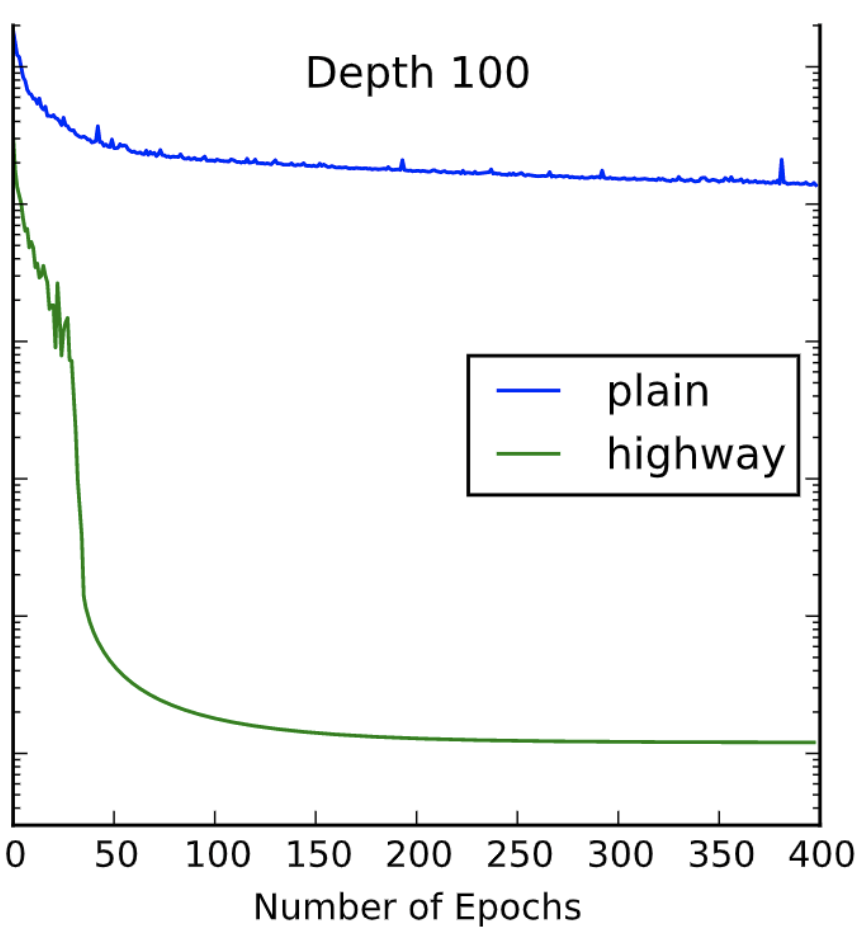Neural ODE
In [[neural networks]] Artificial Neural Networks Simple artificial neural networks using multilayer perceptron , residual connections is a popular architecture to build very deep neural networks1. Apart from residual networks, there are many other designs for deep neural networks23456. These methods share similar ideas that the layered structure in deep neural networks can be treated as a dynamical system and these different architectures are different numerical approaches of solving the dynamical system.
![Figure taken from He K, Zhang X, Ren S, Sun J. Deep Residual Learning for Image Recognition. arXiv [cs.CV]. 2015. Available: http://arxiv.org/abs/1512.03385](../assets/neural-ode-basics/he2015-residual-block.png)
Figure taken from He K, Zhang X, Ren S, Sun J. Deep Residual Learning for Image Recognition. arXiv [cs.CV]. 2015. Available: http://arxiv.org/abs/1512.03385
The degradation problem
For deep neural networks, not all deep architectures are able to produce results that are significantly better than shallow architectures. It has been observed that “simply” stacking more layers to a shallow network may reach some saturated performance quite fast and leaving most of the added layers less useful.
In the work by Srivastava et al, they showed a comparison of “plain” deep networks, which has the layers simply stacked, and their highway networks which has gates that control how close to identity each layer is. The following is a figure extracted from their seminal work Highway Networks.

Neural ODE
An alternative view of the above approaches as [[Ordinary Differential Equations]] Ordinary Differential Equations Solving ODEs Using Finite Difference Methods of dynamical system. For example, a residual connection structure can be reformulated as a first order different equation7, i.e., a residual connection of the following form
$$ h_{t+1} = h_t + f(h_t, \theta_t), $$
is a discretized case of the differential equation
$$ \frac{\mathrm d h(t)}{\mathrm d t} = f(h(t), \theta(t), t). $$
In the above equation, the variable $t$ is not necessarily physical time. This is an “extrapolated” version of the number of layers. But under some certain problems, $t$ can be the physical time.
Given any Jacobian $f(h(t), \theta(t), t)$, we can, at least numerically, perform integration to find out the value of $h(t)$ at any $t=t_N$,
$$ h(t_N) = \int_{t_0}^{t_i} f(h(t), \theta(t), t) \mathrm dt. $$
In this formalism, we find out the transformed input $h(t_0)$ by solving this differential equation. In traditional neural networks, we achieve this by stacking many layers of neural networks using skip connections.
In the original Neural ODE paper, the authors used the so-called reverse-model derivative method7.
Time Series and Neural ODE
We can model the data generating process behind time series data using dynamical systems. The simplest continuous formulation is a first order ordinary differential equation. Given time series $\{y_i\}$, we can use the following first order differential equation
$$ \frac{\mathrm dy(t)}{\mathrm d t} = f(y(t), \theta, t). $$
Generally speaking, finding $f$ requires a lot of hypothesis and explorations. Neural ODE provides a general framework to approximate such a dynamical system.
For example, we can feed some data points $\{(t_0, y_0), (t_1, y_1), \cdots, (t_m, y_m)\}$ into the model, and we solve the differential equation for $t=t_{m+1}$. By calculating the loss and applying backpropagation, we can optimize the parameters $\theta$ in the Jacobian $f$. We then feed the next data points $\{(t_1, y_1), (t_2, y_2), \cdots, (t_{m+1}, y_{m+1})\}$ and solving for $t=t_{m+2}$ and do the same. By exhausting the whole dataset, we can find an “optimal” Jacobian $f$ which can be used in inference to rebuild the whole dynamics.
He2015 He K, Zhang X, Ren S, Sun J. Deep Residual Learning for Image Recognition. arXiv [cs.CV]. 2015. Available: http://arxiv.org/abs/1512.03385 ↩︎
Srivastava2015 Srivastava RK, Greff K, Schmidhuber J. Highway Networks. arXiv [cs.LG]. 2015. Available: http://arxiv.org/abs/1505.00387 ↩︎
Zhang2016 Zhang X, Li Z, Loy CC, Lin D. PolyNet: A Pursuit of Structural Diversity in Very Deep Networks. arXiv [cs.CV]. 2016. Available: http://arxiv.org/abs/1611.05725 ↩︎
Larsson2016 Larsson G, Maire M, Shakhnarovich G. FractalNet: Ultra-Deep Neural Networks without Residuals. arXiv [cs.CV]. 2016. Available: http://arxiv.org/abs/1605.07648 ↩︎
Gomez2017 Gomez AN, Ren M, Urtasun R, Grosse RB. The Reversible Residual Network: Backpropagation Without Storing Activations. arXiv [cs.CV]. 2017. Available: http://arxiv.org/abs/1707.04585 ↩︎
Lu2017 Lu Y, Zhong A, Li Q, Dong B. Beyond Finite Layer Neural Networks: Bridging Deep Architectures and Numerical Differential Equations. arXiv [cs.CV]. 2017. Available: http://arxiv.org/abs/1710.10121 ↩︎
Chen2018 Chen RTQ, Rubanova Y, Bettencourt J, Duvenaud D. Neural Ordinary Differential Equations. arXiv [cs.LG]. 2018. Available: http://arxiv.org/abs/1806.07366 ↩︎ ↩︎
- He2015 He K, Zhang X, Ren S, Sun J. Deep Residual Learning for Image Recognition. arXiv [cs.CV]. 2015. Available: http://arxiv.org/abs/1512.03385
- Srivastava2015 Srivastava RK, Greff K, Schmidhuber J. Highway Networks. arXiv [cs.LG]. 2015. Available: http://arxiv.org/abs/1505.00387
- Zhang2016 Zhang X, Li Z, Loy CC, Lin D. PolyNet: A Pursuit of Structural Diversity in Very Deep Networks. arXiv [cs.CV]. 2016. Available: http://arxiv.org/abs/1611.05725
- Larsson2016 Larsson G, Maire M, Shakhnarovich G. FractalNet: Ultra-Deep Neural Networks without Residuals. arXiv [cs.CV]. 2016. Available: http://arxiv.org/abs/1605.07648
- Gomez2017 Gomez AN, Ren M, Urtasun R, Grosse RB. The Reversible Residual Network: Backpropagation Without Storing Activations. arXiv [cs.CV]. 2017. Available: http://arxiv.org/abs/1707.04585
- Lu2017 Lu Y, Zhong A, Li Q, Dong B. Beyond Finite Layer Neural Networks: Bridging Deep Architectures and Numerical Differential Equations. arXiv [cs.CV]. 2017. Available: http://arxiv.org/abs/1710.10121
- msurtsukov2019 msurtsukov. msurtsukov/neural-ode: Jupyter notebook with Pytorch implementation of Neural Ordinary Differential Equations. In: GitHub [Internet]. [cited 21 Aug 2022]. Available: https://github.com/msurtsukov/neural-ode
- Chen2018 Chen RTQ, Rubanova Y, Bettencourt J, Duvenaud D. Neural Ordinary Differential Equations. arXiv [cs.LG]. 2018. Available: http://arxiv.org/abs/1806.07366
L Ma (2022). 'Neural ODE', Datumorphism, 08 April. Available at: https://datumorphism.leima.is/wiki/machine-learning/neural-ode/neural-ode-basics/.